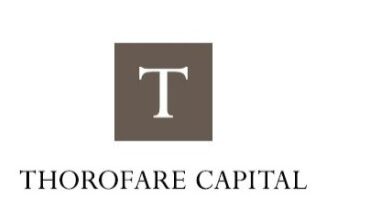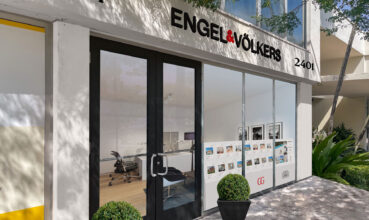

In a commercial real estate market characterized by shifting dynamics and selective opportunities, David Perlman, Managing Director and head of Thorofare Capital‘s New York office, bri...




As online retail rapidly reshaped consumer behavior, many investors exited the brick-and-mortar space, spooked by the rise of e-commerce. But not George Wommack. In 2007, as e-commerce began disrupting traditional retail, he saw a different path forward rooted in the resilience of service-oriented shopping centers.
Wommack first recognized this opportunity by identifying a crucial distinction: small, service-focused shopping centers were fundamentally different from big-box retail that struggled against online competition. “The majority of tenants in these properties are service retailers, over 90% for most portfolios, making them highly resistant to e-commerce disruption,” Wommack explains. This insight formed the foundation of his investment thesis that has proven increasingly prescient.
“While everyone was running away from retail as Amazon gained prominence, I saw opportunity in service-oriented shopping centers that e-commerce couldn’t touch,” says George Wommack, President and CEO of Headwall Investments, whose contrarian bet on unanchored shopping centers is now attracting significant institutional attention.
After taking a seven-year hiatus to pursue other ventures, Wommack returned to the sector in 2019 with Headwall Investments, which takes a fund approach to acquiring and aggregating unanchored shopping centers primarily in Texas markets.
Headwall recently closed on two properties: River District Plaza and Tower at Boerne, continuing its focused growth in Texas. These acquisitions align with the firm’s carefully defined investment criteria.
“We target the major metros of Texas, Dallas-Fort Worth, Houston, Austin, and San Antonio,” Wommack explains. “We look for properties with strong visibility, preferably on signalized intersections, in areas with high median household incomes and dense residential populations.”
Proximity to residential neighborhoods is particularly crucial in Headwall’s strategy. “We prefer properties that back up to single-family residential subdivisions and serve the convenience needs of nearby residents,” says Wommack. “These centers primarily draw customers from within a one-to-three-mile radius.”
For the remainder of 2025, Headwall is targeting “three to five additional acquisitions,” with Wommack noting that “five would be aggressive, but if the opportunities present themselves, we can achieve that goal.”
Perhaps the most significant validation of Wommack’s thesis has been the recent surge in institutional interest in unanchored shopping centers, a trend that has accelerated since late 2024.
“These properties have historically been predominantly owned by individuals, families, and small family offices,” Wommack notes. “Now we’re seeing a dramatic shift as institutional money flows into the space.”
This institutional awakening was highlighted by Site Centers Corp’s strategic decision to spin off its unanchored shopping centers into a separate public company called Curbline. “Curbline is a pure-play, unanchored convenience center public REIT that has been well received by the market and is actively acquiring properties,” Wommack explains.
The market’s enthusiastic reception to Curbline, which has traded at implied cap rates around 5.5% and has further validated the investment case for unanchored shopping centers.
Wommack identifies several factors that make unanchored shopping centers particularly attractive in today’s market:
While institutional interest grows, Headwall has built its portfolio primarily through capital from high-net-worth individuals and family offices.
“We’ve built a substantial portfolio through those channels,” Wommack says. “Our portfolio now represents about $220 million in gross asset value, and we’ve raised $94 million of equity through high-net-worth individuals and family offices who recognized this opportunity early.”
As Headwall continues its disciplined acquisition strategy in Texas markets, Wommack’s early thesis on unanchored shopping centers is gaining broader market acceptance. The combination of e-commerce resistance, low capital requirements, limited new supply, and rental rate upside positions Headwall to capitalize on an opportunity that Wommack identified long before institutional investors took notice.
“Sometimes the best opportunities are hiding in plain sight,” Wommack reflects. “These aren’t flashy properties, but they provide essential services to their communities and reliable returns to our investors.”
Explore similar articles from Our Team of Experts.


In a commercial real estate market characterized by shifting dynamics and selective opportunities, David Perlman, Managing Director and head of Thorofare Capital‘s New York office, bri...


Imagine walking down a tree-lined street in a neighborhood you’re considering. You hold up your phone, and suddenly the world expands with information. Floating above a charming coloni...


In the competitive world of South Florida real estate, adaptability and a diverse skill set are key to success. For Marie Gonneville, the Co-Owner of Engel & Völkers Pompano Beach, her ...


When Jared Epstein looks at a neighborhood, he sees possibilities that others might miss. As President of Aurora Capital Associates, Epstein has built his reputation not just by developing l...


In the early 1980s, a twenty-something developer began building single-family homes in the San Fernando Valley. Today, that same developer, Izek Shomof, is recognized as one of the pivotal f...


Brandon Polakoff’s journey to becoming a Principal and Executive Director at Avison Young’s Tri-State Investment Sales group is a testament to calculated risk-taking in real esta...

